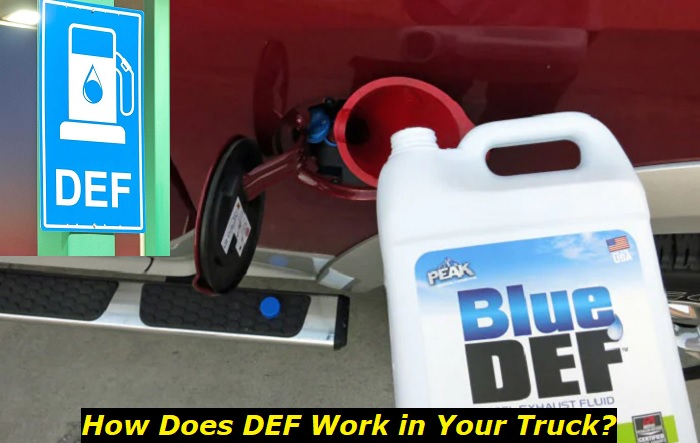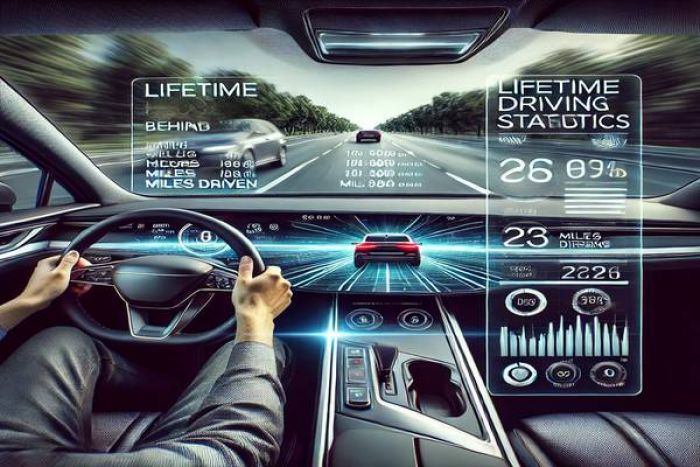Despite the fact that nowadays, modern diesel engines, thanks to diesel particulate filter (DPF), are relatively small polluters compared to the old diesel engines, they still produce a lot of nitrogen oxide.
Without getting into too much detail when it comes to chemical processes, we should know that the fuel is hydrocarbon, so the main products of combustion process are carbon oxides (CO, CO2), aerated water and unburnt hydrocarbons (HC).
Considering that the atmospheric air which is sucked in by the engine consists of a high percentage of nitrogen (79%), the fusion of oxygen and nitrogen at high temperatures in the combustion chamber produces nitrogen oxide, which is highly dangerous and toxic to the environment.

It is safe to say that all exhaust gasses are toxic and carcinogenic, but there is a higher concentration of nitrogen oxide coming from the diesel engines.
This has been known for a while. When Euro 4 engine standard was introduced, back in 2005/2006, the highest allowed rate of nitrogen oxide ejection from diesel engines was 0.25 grams per kilometer. The Euro 5 standard lowered the highest allowed rate to 0.18 grams per kilometer, while the Euro 6 standard brought it all the way down to 0.08.
The first step in solving this issue was lowering the combustion temperature, which was achieved by the introduction of EGR valves (Exhaust Gas re-circulation).
However, since the introduction of EGR wasn't enough to meet the Euro 6 standard, engine manufacturers had to come up with a better, more effective solution.
In order to be able to meet the new requirements, engine manufacturers started using a new solution, under the name of SCR (Selective Catalytic Reduction).
SCR technology uses a mixture of urea (32.5%) and de-ionized water (67.5%). This combination is known as DEF (Diesel Exhaust Fluid). DEF is not a fuel additive, but instead has its own separate tank. Tank capacity varies between 5 and 20 liters depending on the vehicle, but for example, the capacity of the DEF tank in a Dodge Ram 2500 is around 20 liters.
DEF is injected directly into exhaust in small quantities. When the exhaust gasses reach the temperature between 170 and 200 degrees Celsius, the urea is turned into ammonia (NH3). Inside a catalytic converter, which is made from precious metals which are chemically non-reactive, ammonia reacts with nitrogen oxide and produces nitrogen gas (N2) and aerated water (H2O), which are trivial when it comes to pollution.
Exhaust gasses which are produced using this system contain 60% less nitrogen oxide, 80% less unburnt particles at the very least, and roughly 7% less carbon dioxide.
How do I know when I am about to run out of DEF?
All vehicles which use DEF offer you a way of tracking the tank level, or at the very least, warn you when you're close to running out of it. Ford is definitely among those which lack the most in that department, in most cases only having a simple "low DEF" light. Dodge did a much better job at this, and actually has a gauge which you can use to track the DEF level in your tank.
Can I drive the vehicle if the DEF tank is empty?
The answer to this question mostly depends on the exact vehicle in question. Older models can usually be driven without DEF, but the computer will turn on the "limp mode", which drastically lessens your engine's performance by limiting the maximum engine RPM (which, in turn, reduces your acceleration and top speed).
When it comes to modern diesel engines, most of them will outright refuse to start if the DEF tank is empty.
Depending on the vehicle in question, you might even be required to completely fill up the tank before you can start the engine, while there are those which have a minimal amount of a few liters that has to be filled.
How do I fill up the DEF tank?
When it comes to newer vehicles, the DEF cap is located next to the fuel cap. In older vehicles, it can be located in the engine bay or even around the spare tire. If you're unsure, it's usually best to consult the user manual for your specific vehicle.
What is DEF mileage?
Generally, most vehicles use 1-3 liters of DEF per 1.000 kilometers. But, similarly to fuel mileage, it can drastically vary depending on the vehicle and your driving style (more aggressive driving will use up more DEF).
Issues
Unfortunately, this system is not immune to errors and failures, and fixing those can be fairly expensive. There's a lot of sensors, electronic parts, injectors. All of the aforementioned parts have their lifespan. The most common culprit when it comes to issues with DEF systems is the NOx sensor. Additionally, if the vehicle is not used and driven regularly, and DEF is left in the tank for a long time, crystals may appear in the exhaust fluid, which can cause damage.
Does DEF have an expiration date?
Surprisingly, it does, which is why you should pay attention to the expiration date when buying it. If you use DEF which has expired, it can cause all sorts of unpleasant situations and damage to your vehicle's SCR system. Don't forget, this system has a lot of sensitive sensors which control different aspects, so they may report varying issues - from liquid quality sensor, to the sensor which measures the level of nitrogen oxide in the exhaust.
Can DEF get frozen?
DEF's freezing point is -11 degrees Celsius. Fortunately for us, vehicles with DEF have heaters for the DEF tank. This is not something to be worried about, because, regardless of the outside temperature, the system will heat up the liquid and will start using it regularly when it determines it's safe to do so.
Is DEF dangerous?
DEF is not toxic, nor is it flammable, but it is corrosive, which means it can damage metal surfaces, as well as certain types of plastic. It can also damage the paint on your vehicle, which is why you should be careful when filling the tank.
About the authors
The CarAraC research team is composed of seasoned auto mechanics and automotive industry professionals, including individuals with advanced degrees and certifications in their field. Our team members boast prestigious credentials, reflecting their extensive knowledge and skills. These qualifications include: IMI: Institute of the Motor Industry, ASE-Certified Master Automobile Technicians; Coventry University, Graduate of MA in Automotive Journalism; Politecnico di Torino, Italy, MS Automotive Engineering; Ss. Cyril and Methodius University in Skopje, Mechanical University in Skopje; TOC Automotive College; DHA Suffa University, Department of Mechanical Engineering






Add comment